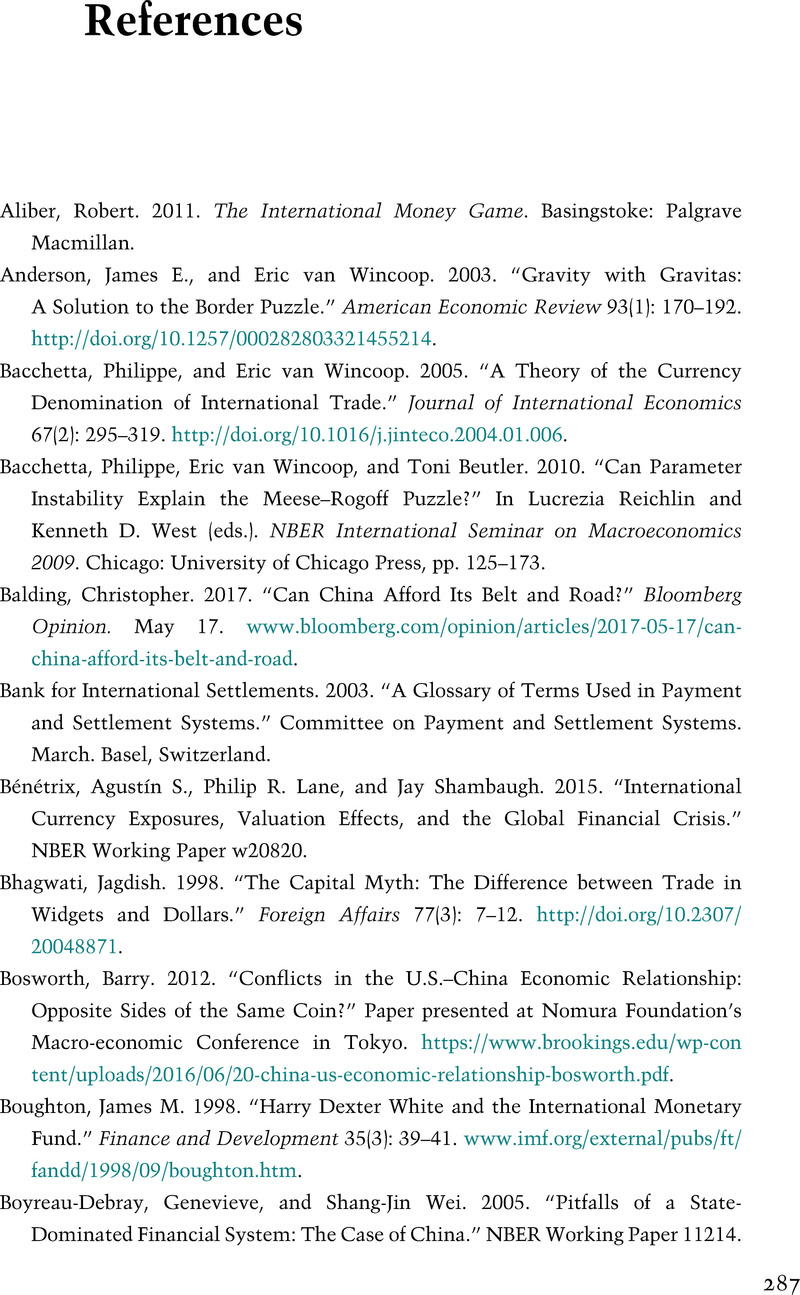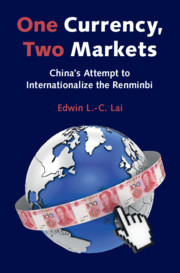Book contents
- One Currency, Two Markets
- One Currency, Two Markets
- Copyright page
- Dedication
- Contents
- Figures
- Tables
- Boxes
- Preface
- Acknowledgments
- A Short Summary of This Book
- Abbreviations
- 1 Introduction
- 2 China’s Aversion to a Floating Exchange Rate
- 3 Why Does China Want to Internationalize the RMB?
- 4 China’s Strategy of Internationalizing the RMB
- 5 The Importance of Capital Account Liberalization
- 6 The Importance of Financial Sector Reform
- 7 The Importance of the Offshore RMB Market
- 8 The Potential of the RMB as a Payment Currency
- 9 The Prospects of RMB Internationalization
- References
- Further Reading
- Index
- References
References
Published online by Cambridge University Press: 17 June 2021
- One Currency, Two Markets
- One Currency, Two Markets
- Copyright page
- Dedication
- Contents
- Figures
- Tables
- Boxes
- Preface
- Acknowledgments
- A Short Summary of This Book
- Abbreviations
- 1 Introduction
- 2 China’s Aversion to a Floating Exchange Rate
- 3 Why Does China Want to Internationalize the RMB?
- 4 China’s Strategy of Internationalizing the RMB
- 5 The Importance of Capital Account Liberalization
- 6 The Importance of Financial Sector Reform
- 7 The Importance of the Offshore RMB Market
- 8 The Potential of the RMB as a Payment Currency
- 9 The Prospects of RMB Internationalization
- References
- Further Reading
- Index
- References
Summary

- Type
- Chapter
- Information
- One Currency, Two MarketsChina's Attempt to Internationalize the Renminbi, pp. 287 - 298Publisher: Cambridge University PressPrint publication year: 2021



